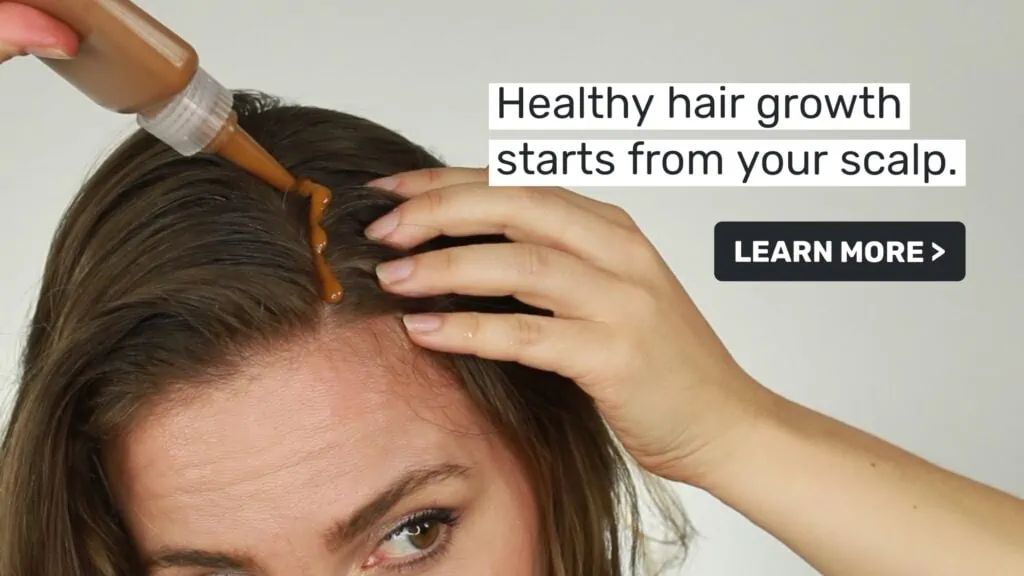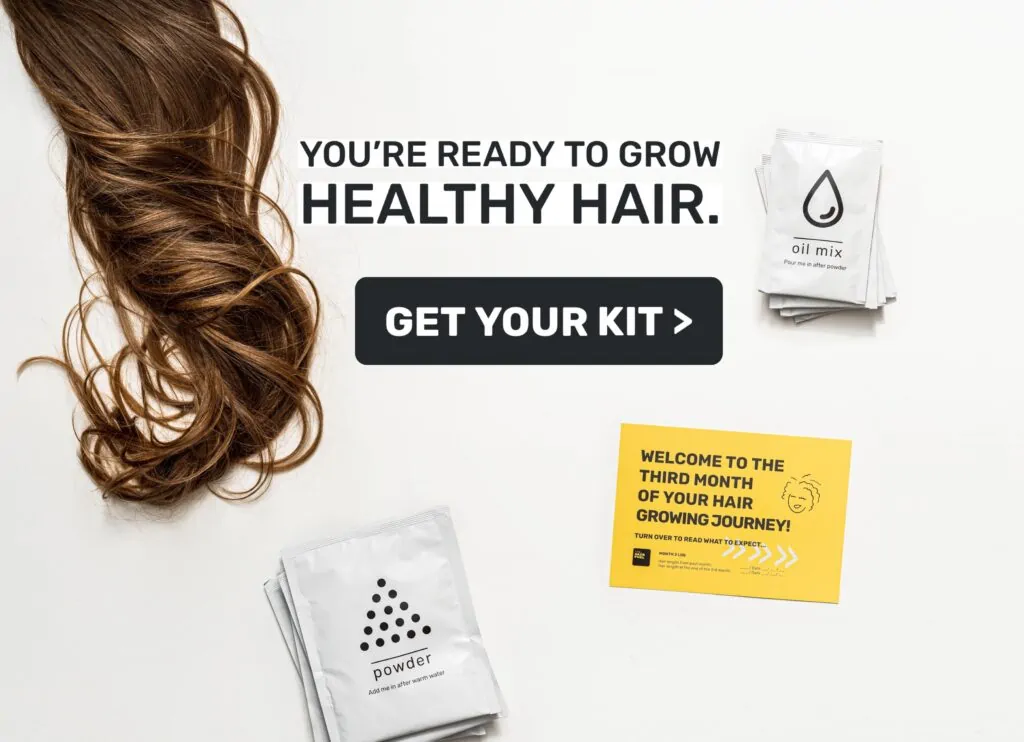Mother Nature and your follicles – are both waking up in spring. But, in addition to the spring hair growth spike, your follicles also undergo a spring hair loss. Is there anything you should be aware of to maintain good hair growth during the season considering these natural fluctuations? Here are some tips for taking care of your hair strands and hair roots based on the season.
1. Spring hair loss phenomena
“Autumn shed,” sometimes known as “late summer shedding” occurs in the autumn and winter when hair development slows down and more follicles enter the resting (telogen) stage. But after winter, your hair follicles enter telogen – or shedding / resting phase – once again in spring – although somewhat lesser than in autumn months. This can still be concerning if you don’t know what and why it is happening. Science writes this phenomena down to shedding of the “winter coat” – a nod to our mammalian origins.
Remember that as your hair is falling out, majority of it will be replaced by the new hair growing underneath. Look out for a “spring halo” around May / June as your hair renews itself. If you’re only experiencing excessive hair loss and no hair growth to replace it, it’s worth speaking to a doctor as well as employ some of the approaches outlined in this article.
Nothing can beat preparation: to ensure that healthy new hair is growing in the place of the ones that are “departing” – it is important to nourish your scalp (and your body) – inside and out BEFORE lack of new hair growth becomes a problem to deal with in summer. Some of these care techniques are covered in this article.

2. Scalp blood flow and spring hair growth spurt
Your hair follicles enter its peak growth stage between February and early April as shown in the graph below.

Spring hair growth spurt is a part of your circannual rhythms to replace the “winter coat” – much like all the other mammals do. But your body may also evolved to grow extra covering in spring, perhaps as a way to protect your bipedal ancestors against the midsummer sun! So an increased hair fall in spring is part of post-winter shedding, and new growth is a way to protect your scalp against the sun.
In that growth stage, your follicles need all the nutrients they can get to grow healthy hair. This is why improving blood flow to scalp during this time becomes especially important: whether by scalp massages, dermarolling or scalp treatments, it will ensure your hair follicles receive enough fuel to grow healthy hair in line with the seasonal patterns of hair growth.
Another way you can support spring hair growth spurt – is to supplement your diet with micronutrients and vitamins, so that your hair follicles receive maximum nutrients. Of course you should decide your supplement regime based on your blood panel, most common deficiencies though are in magnesium and iron – essential for hair growth and scalp health. Vitamin C is essential for production of collagen – which lines the inner sack of the hair follicle, full complex of B vitamins – necessary to convert the protein you consume into keratin – amongst many other nutrients your body and hair follicles might need on an individual basis.
3. Care for your scalp
If you need a seasonal reminder to do this – here it comes. Your scalp is the part of your body that grows your hair, and it helps to remember that scalp is skin. So much like you, hopefully, care for your skin – you need to take care of your scalp, too.
Scalp care is essential for hair growth because it helps to create a healthy environment for your hair follicles. The scalp is the foundation for healthy hair, and if it is not properly cared for, it can lead to hair problems like hair thinning, hair loss, dandruff, and an itchy or flaky scalp. Here is why scalp care is important:
- Promotes Blood Circulation: Scalp massages can help to stimulate blood flow to the hair follicles, which provides them with essential nutrients and oxygen that they need to grow strong and healthy ahead of summer. Winter hats and general unwillingness to do any “extras” to your hair in colder months might have meant a reduced blood flow to your scalp – spring is an invitation to tackle that.
- Removes Buildup and Impurities: Dirt, oils, and product buildup on the scalp can clog hair follicles, which can lead to hair thinning and hair loss. Combination of sweat and lack of oxygen in colder months increases the need for scalp exfoliation and cleansing to remove these impurities and promote healthy hair growth in spring.
- Reduces Inflammation: Inflammation in the scalp can cause damage to the hair follicles and lead to hair loss due to hair follicle minituarisation. Inflammation needs to be tackled in the body overall by appropriate diet and lifestyle choices that this article explains.
- Balances Scalp pH: The pH level of the scalp can affect the health of the hair follicles. An imbalanced scalp pH can cause the hair to become dry, brittle, and prone to breakage. Proper scalp care can help to balance the scalp’s pH, which can promote healthy hair growth.
Some hands-on activities to include in your scalp care ritual:
- a scalp brush to use when shampooing
- clarifying shampoo at least once a month
- once-a-week hair & scalp oiling
- scalp massage
- scalp scrub (homemade from used coffee beans!)
4. Change your pillow(case)
Ahead of the sweaty summer days and as part of your spring clean, wash your pillow. Pillow accommodates bacteria, a study by Manchester university revealed that the average pillow contained around 1 million fungal spores. So wash your pillow – twice a year, your protective cover – every month, and your pillow case – every week. A silk pillowcase reduces hair frizz and tangle as the hair glides smoothly across silky surface, the smooth surface also prevents your skin prematurely get wrinkles, too.

5. Your pantry has the key for healthy hair
Whatever you apply to your scalp, strong hair begins from the inside out. After winter, your social calendar can quickly fill up with dinners, after-work drinks, and much less time to cook, leaving you more likely to grab quick snacks on the move. So, it’s essential to make sure your pantry is healthy hair-friendly for quick, balanced meals:
- Various nuts & seeds are packed with nutrients like vitamin E, B vitamins, zinc and essential fatty acids, all of which are required for healthy body functioning, including hair growth:
- sesame seeds deserve recognition on their own; as one of the “underdog” seeds, they have the same amount of fat and sugar as peanuts while having the same amount of protein (18g) per 100g. Your hair needs protein: your hair strands are made up of keratin – which is a form of protein. So, go get those sesame seeds or 100% tahini – a sesame seed paste that adds creaminess to soups and salad dressing
- almonds – sources of monounsaturated fat, protein, vitamin E, calcium, copper, magnesium and riboflavin.
- walnuts – a single serving (30g or 1 ounce) contains enough RDA of omega-3 – a fatty acid that fights inflammation in your body
- canned lentils and chickpeas contain easily digestible proteins that your body breaks into amino acids which your hair follicles need to grow healthy hair. Having a few cans in your pantry enables you to add protein to stews without taking hours to cook them.
- protein powder – especially important if you’re following a plant-based diet. Your body needs protein – specifically the amino-acids from the proteins you consume to “construct” tissues of your body, including your hair.
- look out for methionine content in your protein powder – for it provides sulphur that your hair needs. Tempeh (fermented soy beans) and Brazil nuts are sources of methionine for vegans, but on their own insufficient. It is easy to take too much of Brazil nuts (max 2 nuts per day!) and tempeh only provides a fifth of your RDA of methionine. Therefore you should consider supplementing methionine additionally if you’re not consuming enough animal-based proteins like turkey, liver (from beef or chicken) – the latter is especially rich source of methionine, since it is in liver that methionine is produced.
- nutritional yeast – although a source of vitamin B12, to get your daily recommended amount you might need to add a few spoonfuls to your meal. Nutritional yeast adds plenty of umami flavour to pasta (if you want to skip the cheese) and salads.
- linseed (flaxseed) has anti-inflammatory properties due to amounts of omega 3 oils. This benefits your scalp health, as well as your nervous system. Linseed contains lignans, compounds that can rebalance your hormones if you are suffering from androgenetic alopecia or polycystic ovaries syndrome (PCOS). Add a spoonful or two to yours salads, yoghurt bowls, smoothies or soup as a topping.
- frozen or canned spinach – rich in iron, vitamin A and C – a vitamin essential for collagen production. Iron is essential for hair growth – because it is iron that powers up your haemoglobin cells – those red blood cells that carry oxygen around your body – including your scalp & hair follicles! Add spinach last to preserve the vitamins and not accidentally destroy them by overheating it.
6. Throw away old & expired products
You might have stocked up over the past year: whether it was to try something new, keep up with the hottest social media trend, or simply get a last-minute hairspray for a party you were attending. Check your hair care shelves to see whether any of the products are outdated. Generally speaking, a product has a shelf life of 6 to 24 months after opening, or the “PAO” – period after opening – therefore make sure to discard any items that have passed that mark.
To stop your hair from drying out and breaking, replace your old products with new ones that don’t include harsh sulfates and silicones. Researching a new shampoo, conditioner, or mousse may take an additional hour, but your hair will benefit, besides – the journey of finding the next amazing hair product can be fun!
7. Do a blood check
When was the last time you genuinely understood your vitamin and hormone levels? A blood test is a quick and easy approach to find out which specific nutrients you are deficient in and how to supplement correctly to aid your body through the seasonal transition. Particularly crucial if you observe a notable change in your hair: hair thinning, increased hair fall, or brittleness – can suggest a vitamin shortage as well as be a symptom of underlying conditions such an underactive thyroid or anemia (when your body is short in iron). So listening to your hair is important as it can serve as an indicator for anything unwell going on in your body.
A blood test can also be used to diagnose polycystic ovarian syndrome (PCOS), which has androgenetic alopecia, or generalized hair thinning, as one of its adverse symptoms. Before it becomes a pressing and more serious issue, make an appointment for a health checkup and chat with a physician about your worries.
8. Search & destroy your tired ends
Winter would have been particularly hard on hair lengths if you had longer hair. Your hair got scratched by woolen hats and sweaters, and central heating sucked out all the moisture from your hair. As a result, hair breakage is caused by the cuticles of the hair standing up and “bleeding” out the moisture they require.
Look at your ends critically. Although they may be split, you don’t want to sacrifice length. Take a hair-cutting scissors (important to only use them for haircuts, and not for anything else!), and do a search-and-destroy procedure. Doing it yourself saves you money and can be quite calming and soothing.
On the other hand, after long winter months you might want an update to your hairstyle. So make an appointment with your hairstylist! Think twice before dyeing your hair though, as hair dyes can contain harsh and sometimes even harmful substances that could inhibit your hair growth.

9. Exercise
Maybe you spent the winter taking great care of your body, but maybe not. Hopefully increase daylight and milder weather is your invitation to move your body. Your hair health is your overall health, and exercise is still the best way to support it. Here are some ways exercise can benefit hair growth:
- Improved blood flow: Exercise increases blood flow throughout the body, including the scalp. This increased blood flow brings oxygen and nutrients to the hair follicles, which can promote healthy hair growth.
- Reduced stress: Exercise can help to reduce stress levels, which is important because stress can cause hair loss. When the body is under stress, it produces cortisol, a hormone that can lead to hair thinning and hair loss and make your body shift into “fight or flight” mode – meaning that your body is less concerned with growing healthy hair. Exercise has been shown to reduce cortisol levels, which can help to prevent hair loss.
- Promotes hormonal balance: Hormonal imbalances can contribute to hair loss. Exercise helps to regulate the production of hormones, which can help to maintain a healthy hormonal balance and promote healthy hair growth.
- Increased sweat production: When you exercise, you sweat, which can help to remove toxins from the body. This can help to keep the hair follicles healthy and promote hair growth.
- Improved overall health: Exercise can help to improve overall health, which can indirectly promote healthy hair growth. When the body is healthy, the hair is more likely to be healthy as well.
Exercise is an important aspect of maintaining healthy hair growth. It promotes circulation, reduces stress, promotes hormonal balance, increases sweat production, and improves overall health, all of which contribute to healthy hair growth.
Not sure where to start? Luckily YouTube is filled with exercise content suitable for any fitness level – the challenge is not to get overwhelmed! If you’re just starting up, try Move with Nicole pilates as a gentle way to build your strength and flexibility.
10. Wash your hair brush
If you use your hair brush every day but don’t wash it often enough, the bristles will build up with dirt and grease. This may cause your hair to become greasy more quickly and lose its luster and shine. Spring-clean your hair brush as follows:
- clear out any hair stuck in between the bristles
- clear out any dust stuck to the bristles – a toothpick here comes handy
- get a bowl of warm (not hot) soapy water and rinse your brush a few times
- change the water and repeat step #3 if necessary
- leave your hair brush upright to dry
11. Clean your hairdryer filter
A blocked filter can shorten the lifespan of your hair dryer, lead to over-heating and resulting damage to the hair. Detach the filter from the appliance and wash it in warm soapy water or according to the manufacturer instructions – but make sure to let it dry completely before re-attaching it.
12. Create a hair ritual you’d want stick to
Creating routines for your hair is one of the most effective strategies to ensure that it grows throughout the spring and beyond. Ritual is the time you set aside for yourself, your hair, and the care and consideration it so richly deserves. We created a guided framework for designing a hair care ritual that last 42 days, or 6 weeks, just in time for you to form enduring habits and start your hair growth ahead of the summer months.
Sign up to The Ultimate Hair Health Calendar here >>>

Who we are:
The Hair Fuel is an all-natural hair growth mask created by Laura Sagen, who lost a third of her hair after a terrible visit to a hairdresser while suffering from a life-long condition of PCOS associated with androgenic hair thinning. She developed the formulation rooted in the science of scalp blood flow, which has become The Hair Fuel growth mask. Since then, her company has helped thousands of people like you to start growing healthy hair.
We work closely with our lab and manufacturers to ensure the highest quality product. But a product alone is never enough – so we hold your hand throughout your own, unique hair growth journey. Our flagship product, The Hair Fuel mask coupled with tailored advice, digital tools, and online support is there to help you grow the best hair you can. It’s a big claim – but we’re unafraid to make it. Check out our starter bundles >>
